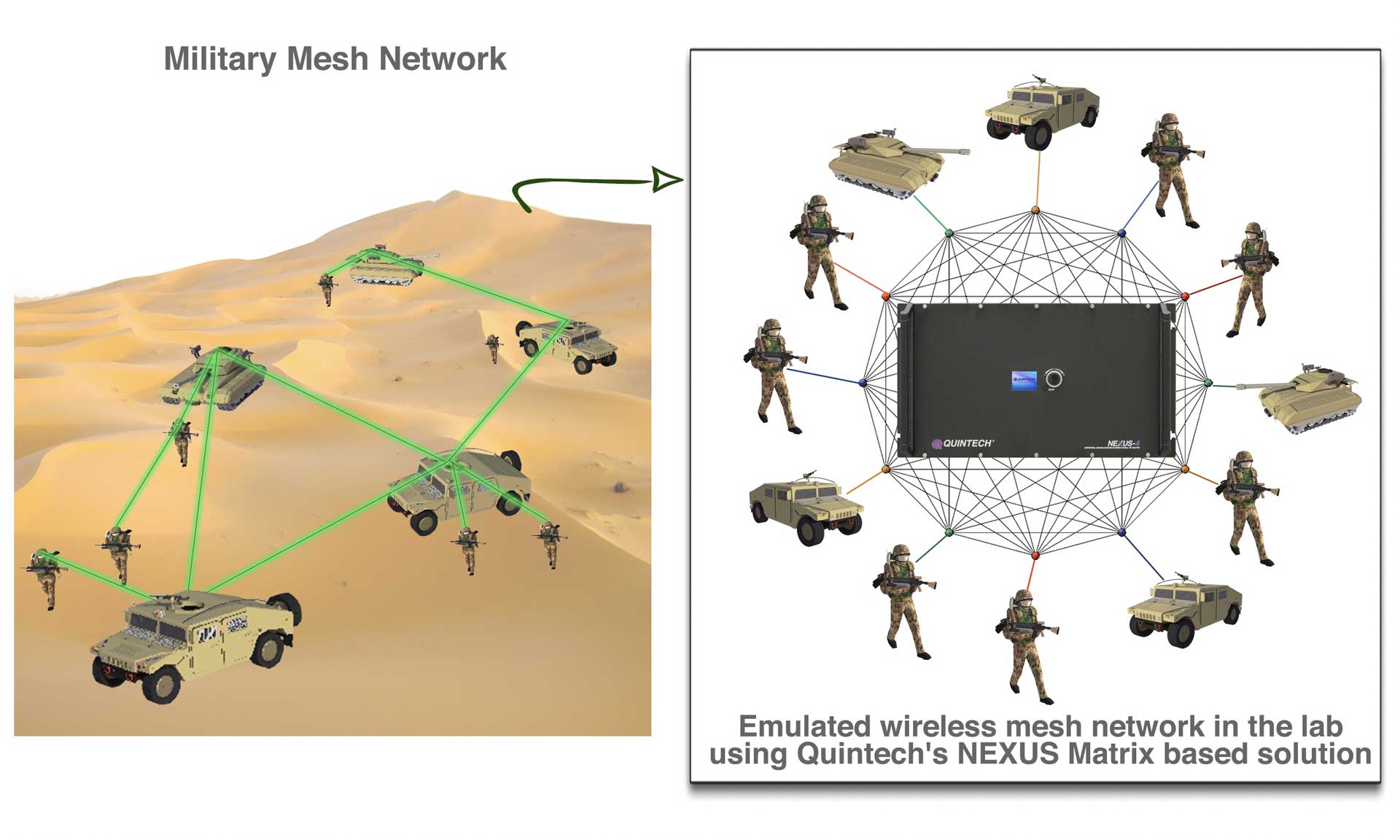Multi-hop wireless mesh networks that are mobile, ad-hoc, self-forming and self-healing offer a full range of situational awareness data. This data includes intelligence, surveillance, reconnaissance feeds, and voice over Internet protocol (VoIP). Such characteristics make them ideal for ad-hoc military and public safety communications. Next Generation Tactical Mesh Network (NG-TacMN) is being tested and deployed for military use. LTE Direct mode on mesh network is being adopted for public safety emergency platforms.
Testing mobility of mesh networks involves physically moving user equipment within the lab or using simulation techniques with questionable accuracy. Accurate lab test environments require a combination of both. This is accomplished by placing wireless nodes into RF shielded enclosures to isolate the nodes from any commercial signals and then connecting the nodes to the Quintech mesh network test solution. Using this solution, devices can be interconnected with the flexibility to configure and re-configure diverse network topologies with complete reproducibility. Dynamically changing the distances between the nodes can be emulated by adjusting the signal levels with remotely controlled variable attenuators that are integrated into the Quintech solution. The RF links and attenuators between nodes can be remotely reconfigured in milliseconds over a LAN network.
Quintech’s Wireless Mesh Network Test Bed provides a scalable, controllable and cost-effective solution for testing military and public safety communication technologies based on mesh topology.
Features & Benefits
- Scalable to support 8, 16, 32, 64 and 128 nodes
- Emulation of nodes joining, leaving, grouping and splitting of mesh networks using the Quintech systems ability to provide real time switching and attenuation of all individual nodes
- Development, testing and verification of the upper layer protocols in realistic scenarios
- Controlled free space environment emulation to enable performance test of Packet loss, Latency and Throughput
- Parallel development using multiple test systems which can be integrated for larger mesh networks; Reduction of development and testing time

